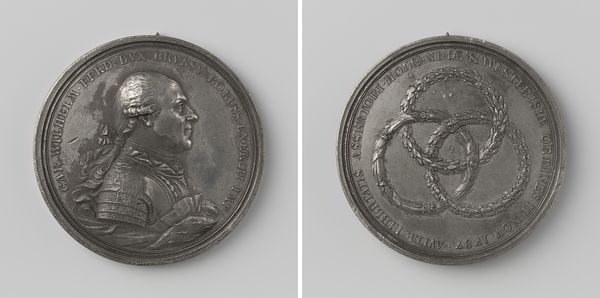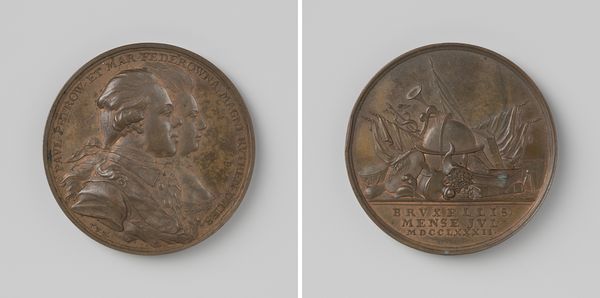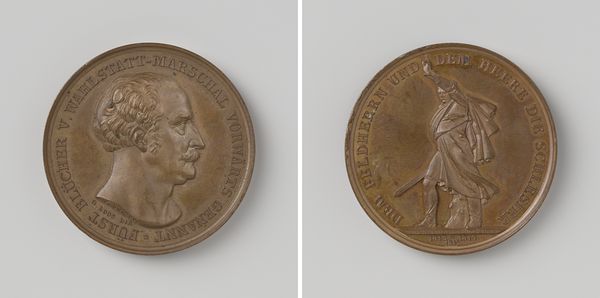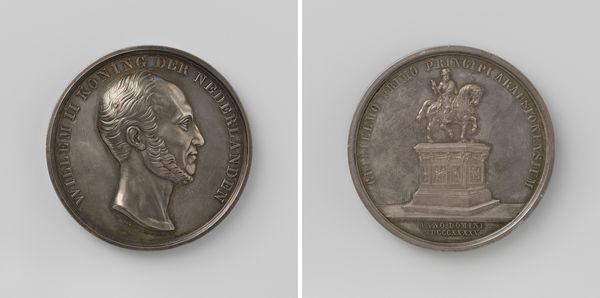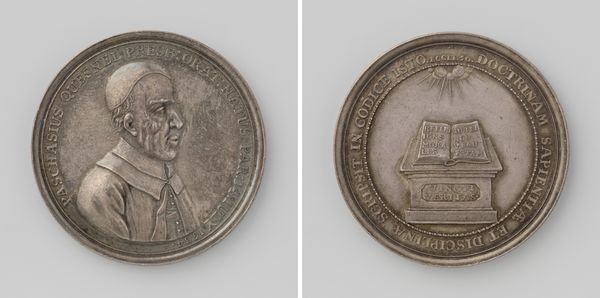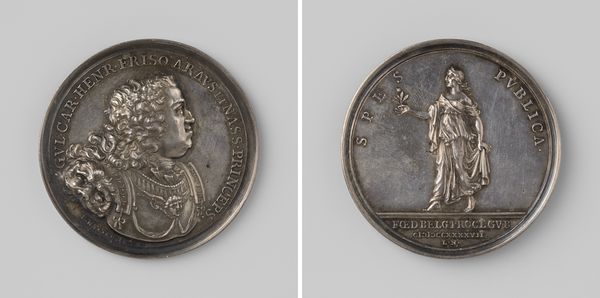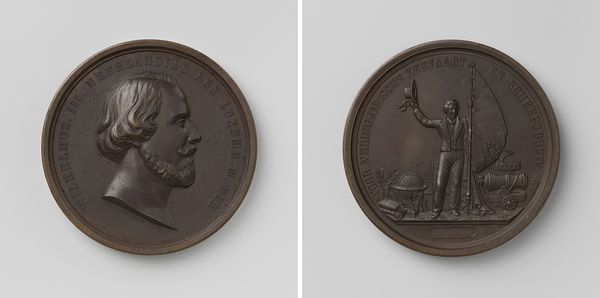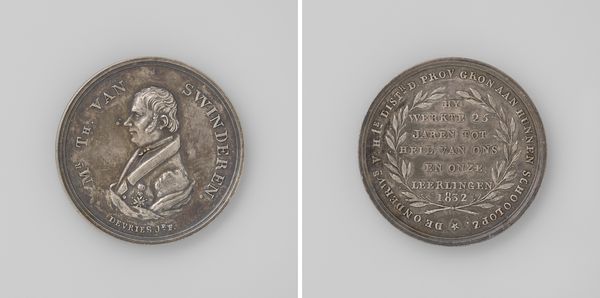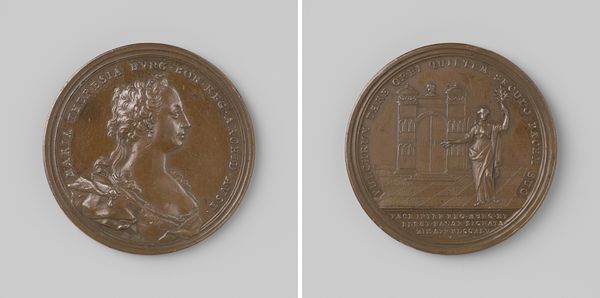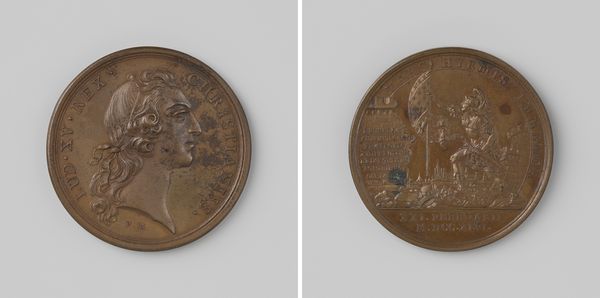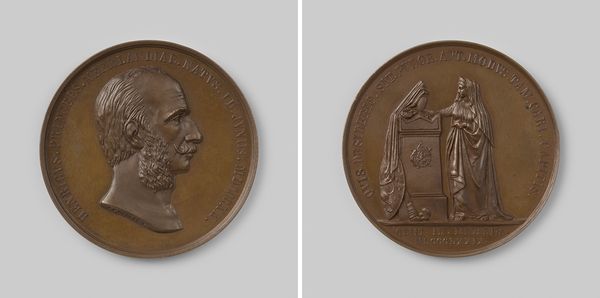
Herstel van de orde in de Nederlanden, ter ere van Karel Willem Ferdinand, hertog van Brunswijk 1787
0:00
0:00
bronze, sculpture
#
portrait
#
neoclacissism
#
sculpture
#
bronze
#
sculpture
#
history-painting
Dimensions: diameter 4.1 cm, weight 23.63 gr
Copyright: Rijks Museum: Open Domain
Curator: This fascinating bronze sculpture is entitled "Herstel van de orde in de Nederlanden, ter ere van Karel Willem Ferdinand, hertog van Brunswijk," created in 1787 by Hans Heinrich Boltshauser. What's your immediate impression? Editor: Austerity. A study in control. There's such a limited color palette; all cool grays. Visually, it feels very contained, despite the historical subject matter. Curator: Indeed. Let’s unpack that a bit. The artwork commemorates Karl Wilhelm Ferdinand, Duke of Brunswick-Wolfenbuttel, and the "restoration of order" in the Netherlands, specifically referencing the suppression of the Patriot movement by Prussian forces. It speaks volumes about power dynamics. Editor: Yes, look at the bundles of arrows just above what looks like an altar on the reverse side. Consider that this artwork hails from a time of considerable anxiety around governance, and that simple banded bundle tells a tale: unified strength through centralized dominion. And notice the motto: “Concordia Res Parvae Crescunt” (“Through harmony, small things grow"). This coin operates almost as a prayer or plea. Curator: I see this medal operating within a framework of patriarchal power consolidation. Who gets to define “order”? What interests does that order protect? And what about those who actively challenge it? This coin participates in erasing the voices of the Patriot movement, painting their resistance as mere "disorder". Editor: Yet even within that imposed order, there's inherent tension. Those seven shields arranged like spokes symbolize division alongside unity. Were they there merely for pomp and ceremony or as an effort to assuage dissent from provinces who would feel disrespected being omitted? This commemorative piece raises compelling questions. Curator: Precisely. Understanding the social and political forces at play invites critical examination of such works. How did these objects function as propaganda? Who did they serve, and whose stories were suppressed? Editor: Ultimately, "Herstel van de orde" transcends mere representation; it's an active participant in constructing cultural memory through a series of time-tested visual allegories, however charged. I keep asking, though: "For whom are the bells rung?" Curator: It underscores how imperative is an intersectional lens through which to comprehend such pieces, remembering that "restoration" often comes at someone else's expense. Editor: An intriguing dance between symbolism and its surrounding context indeed, don't you agree?
Comments
No comments
Be the first to comment and join the conversation on the ultimate creative platform.
